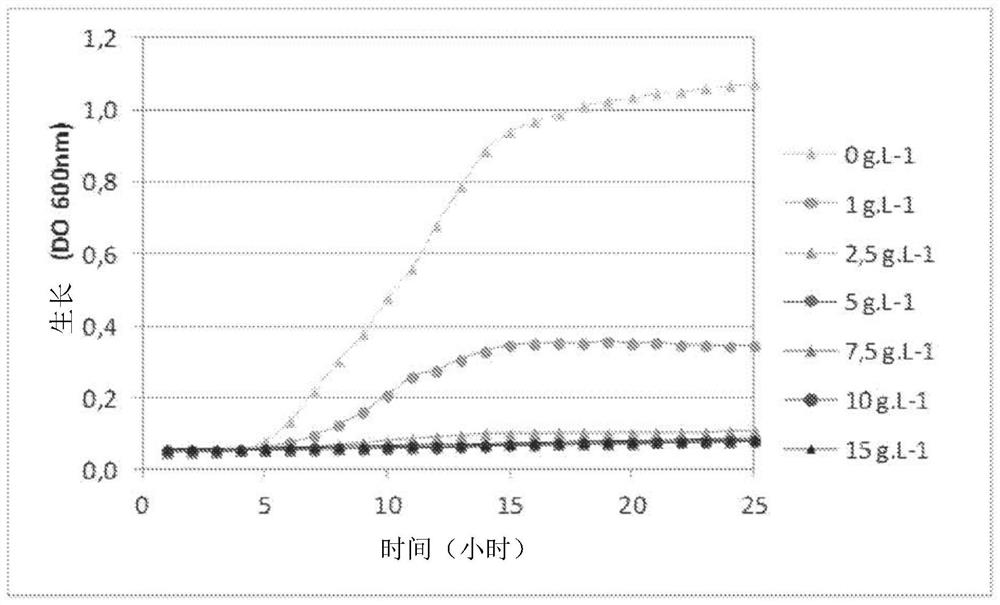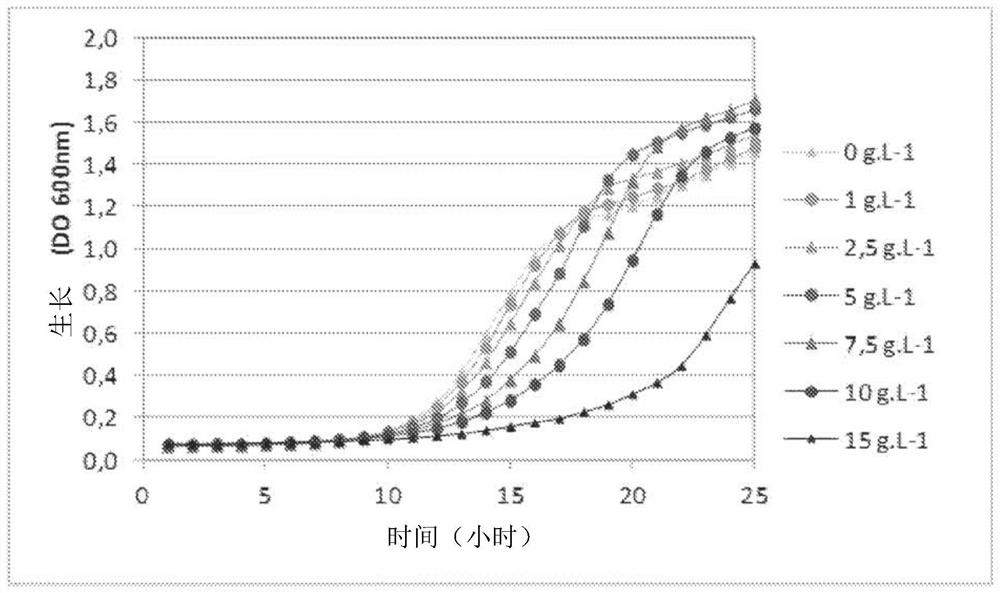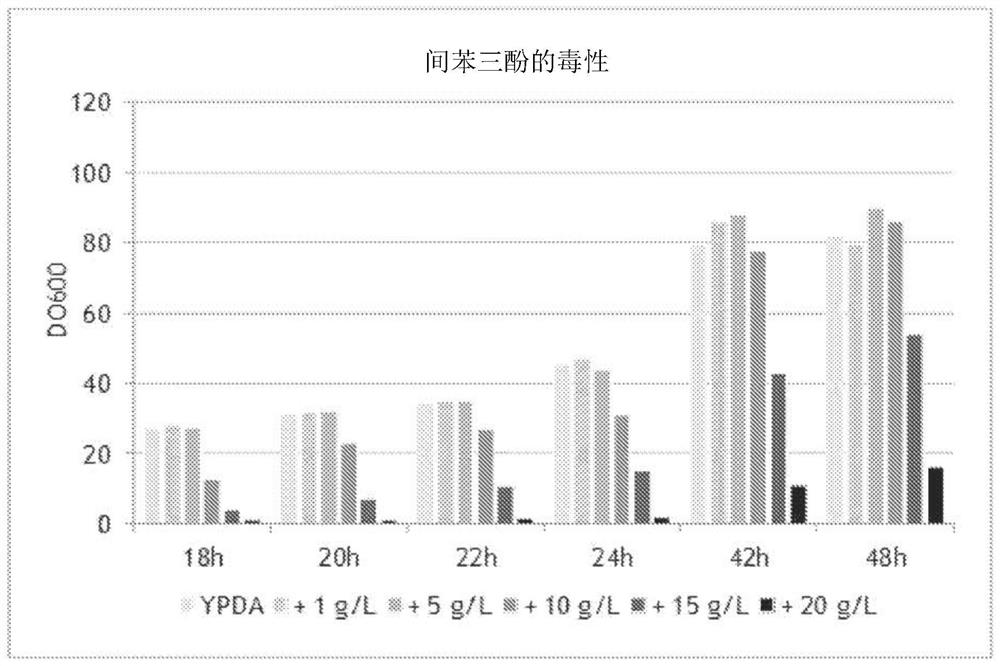Phloroglucinol-resistant cell, in particular yeast
A technology of phloroglucinol resistance and phloroglucinol, applied in the direction of receptors/cell surface antigens/cell surface determinants, bacteria, fermentation, etc., can solve problems such as the toxicity of phloroglucinol that has not been studied
- Summary
- Abstract
- Description
- Claims
- Application Information
AI Technical Summary
Problems solved by technology
Method used
Image
Examples
Embodiment 1
[0187] Example 1: Method for Determination of Phloroglucinol
[0188] The method used to determine phloroglucinol is described in detail below. It includes in particular a step of extracting phloroglucinol followed by a step of determination by chromatography.
[0189] 1.1 Extract Phloroglucinol
[0190] The method was carried out using resorcinol as the internal standard (EI). Various tests carried out liquid-liquid extraction at pH 4.0 in the presence of ethyl acetate as solvent by saturating the aqueous phase with NaCl. Extraction was performed on cyclic shaking for 30 minutes. Remove the organic phase and place at 30 °C under nitrogen N 2 The ethyl acetate solvent was evaporated under flow. The dry extract obtained after complete evaporation is then absorbed into a given volume of 50%-50% ethanol / H 2 O mixture.
[0191] Extraction yield (RDT) was measured by mass spectrometry after high pressure chromatography on a C18 column (dimensions: 100 mm*2.1 mm; particle s...
Embodiment 2
[0199] Example 2: Evaluation of Phloroglucinol Toxicity to Bacterial or Yeast Cells
[0200] To understand the threshold of phloroglucinol resistance in bacteria or yeast, growth kinetics were prepared in the presence of various concentrations of phloroglucinol. These preliminary experiments were designed to evaluate their EC 50 .
[0201] Experiment in the following way. Phloroglucinol to 15g.l -1 was dissolved in complete medium (yeast extract 1% + bacteriopeptone 2%) containing 2% glucose as carbon source (YPD medium). A culture medium containing a lower concentration of phloroglucinol was obtained by diluting this first medium in the same YPD medium containing 2% glucose.
[0202] For experiments, wild-type yeast or bacterial cells were incubated with a DO of 0.05 at the start of the culture. 600nm Inoculations containing 0 (positive controls for growth are indicated as C+), 1, 2.5, 5, 7.5, 10 or 15 g.l -1 of phloroglucinol in various media. Cultures were performed ...
Embodiment 3
[0213] Example 3: Overexpression of PDR and measurement of the effect of yeast on phloroglucinol resistance
[0214] 3.1 Integration of genes encoding various PDRs in Saccharomyces cerevisiae
[0215] The gene encoding the PDR protein was amplified by PCR ("polymerase chain reaction") from yeast (W303-1A) genomic DNA and cloned into a plasmid. The accuracy of the sequence was verified by sequencing. according to Figure 4A The structure described in , integrates various genes encoding PDRs into the genome at the JLP1 locus. Each strain was constructed with a YA number, and thus a library of 28 yeast strains overexpressing the PDR transporter was constructed at a ratio of two clones per transporter.
[0216] Table 2: Protein sequences of cloned PDR membrane transporters and transcription factors
[0217] protein NCBI reference SEQ ID NO PDR5 NP_014796.3 SEQ ID NO: 1 SNQ2 NP_010294.1 SEQ ID NO: 2 PDR10 PTN22535.1 SEQ ID NO: 3 P...
PUM
| Property | Measurement | Unit |
|---|---|---|
| particle diameter | aaaaa | aaaaa |
Abstract
Description
Claims
Application Information
 Login to View More
Login to View More - R&D
- Intellectual Property
- Life Sciences
- Materials
- Tech Scout
- Unparalleled Data Quality
- Higher Quality Content
- 60% Fewer Hallucinations
Browse by: Latest US Patents, China's latest patents, Technical Efficacy Thesaurus, Application Domain, Technology Topic, Popular Technical Reports.
© 2025 PatSnap. All rights reserved.Legal|Privacy policy|Modern Slavery Act Transparency Statement|Sitemap|About US| Contact US: help@patsnap.com



